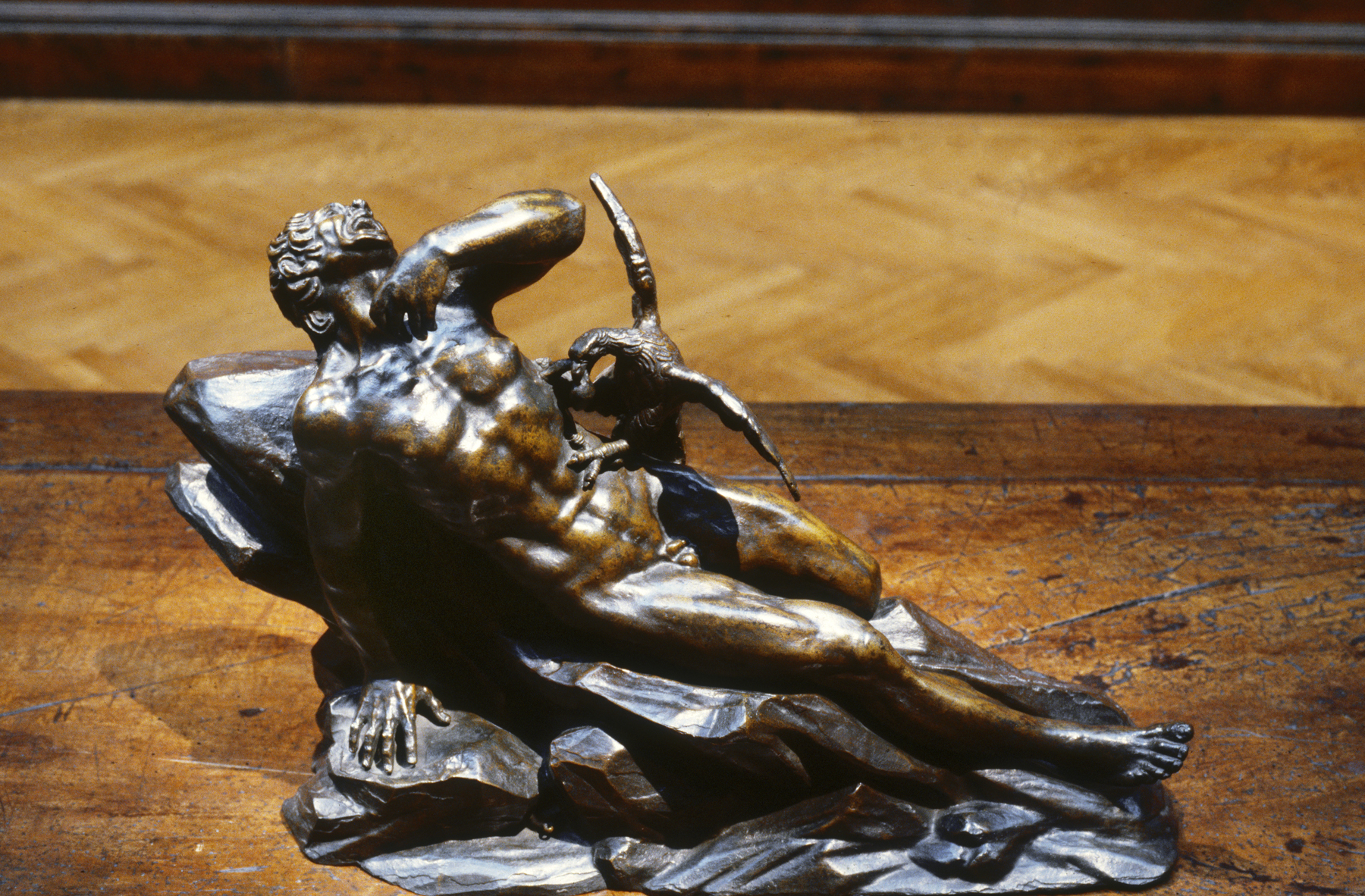Prometheus
(Baroque Europe )
According to ancient Greek mythology, the giant Prometheus created the first man out of clay and gave him fire, essential for the development of technology and the arts, by which men became more like gods themselves. Zeus, the king of the gods, punished him for this, chaining him to a mountainside and sending an eagle that every day pecked out Prometheus's liver, which re-grew overnight. He was eventually freed by Hercules.
Many artists of the Baroque period sought to depict extreme emotions through body language. Prometheus's convulsed body, splayed diagonally across the rock (a 19th-century replacement, originally including a tiny chain to hold him down), and face distorted by screaming, convey his pain.
Provenance
Provenance (from the French provenir, 'to come from/forth') is the chronology of the ownership, custody, or location of a historical object. Learn more about provenance at the Walters.
Raoul Heilbronner, Paris, by purchase; Henry Walters, Baltimore, 1911, by purchase, Walters Art Museum, 1931, by bequest.
Exhibitions
| 1998-2001 | Highlights from the Collection. The Walters Art Gallery, Baltimore. |
Conservation
| Date | Description | Narrative |
|---|---|---|
| 11/1/1958 | Treatment | cleaned |
| 4/21/1988 | Examination | examined for condition |
| 7/2/1990 | Treatment | other |
Geographies
Italy, Rome
(Place of Origin)
Italy, Florence (Place of Origin)
Measurements
12 11/16 x 18 13/16 in. (32.3 x 47.8 cm)
Credit Line
Acquired by Henry Walters, 1911
Location in Museum
Accession Number
In libraries, galleries, museums, and archives, an accession number is a unique identifier assigned to each object in the collection.
In libraries, galleries, museums, and archives, an accession number is a unique identifier assigned to each object in the collection.
54.618


